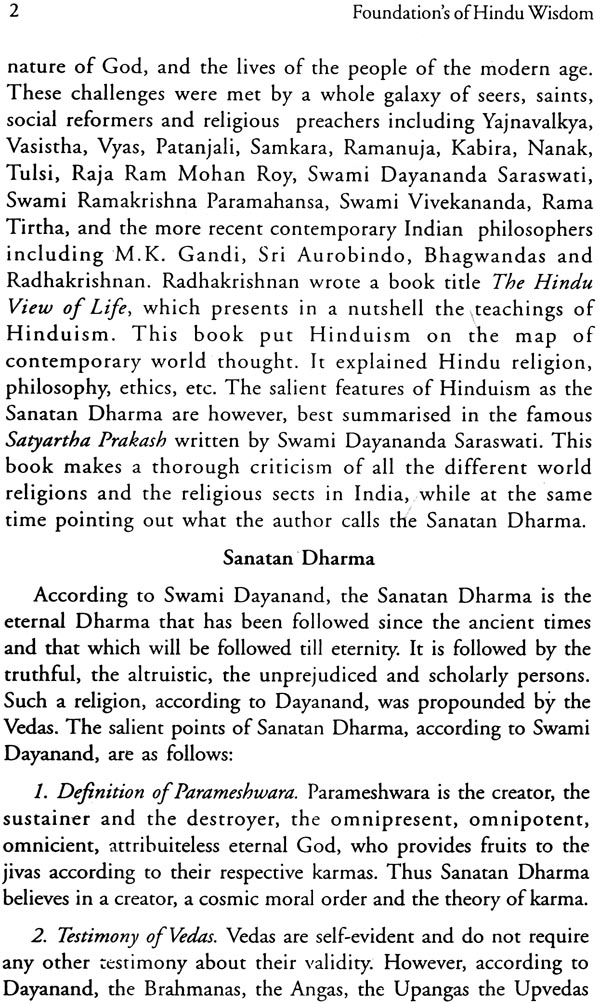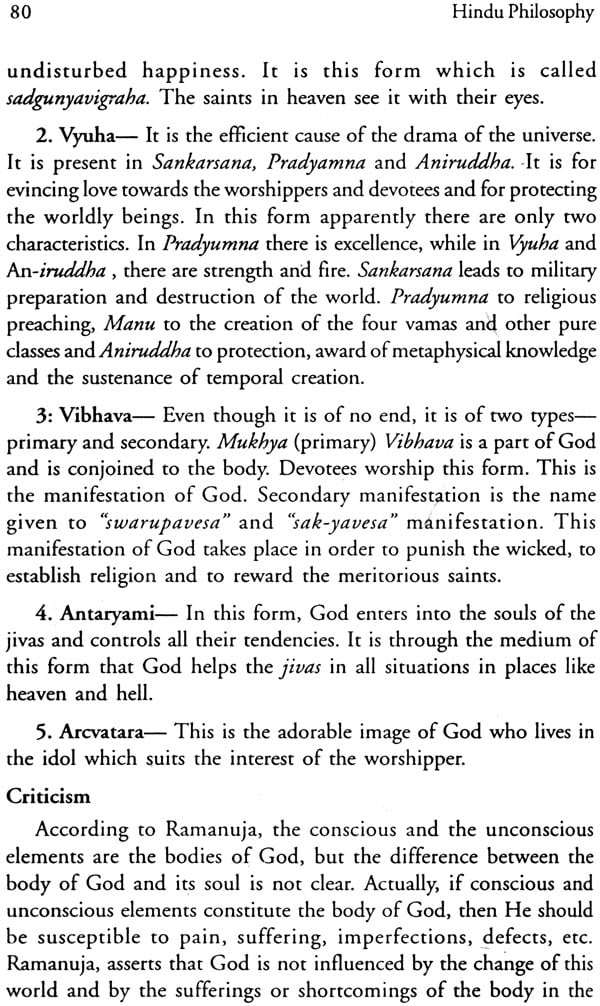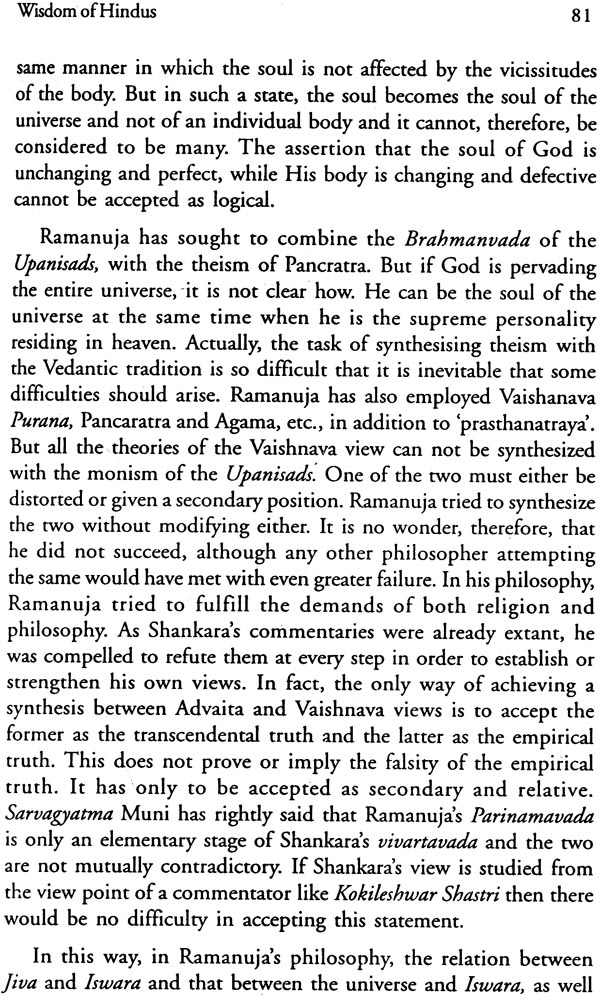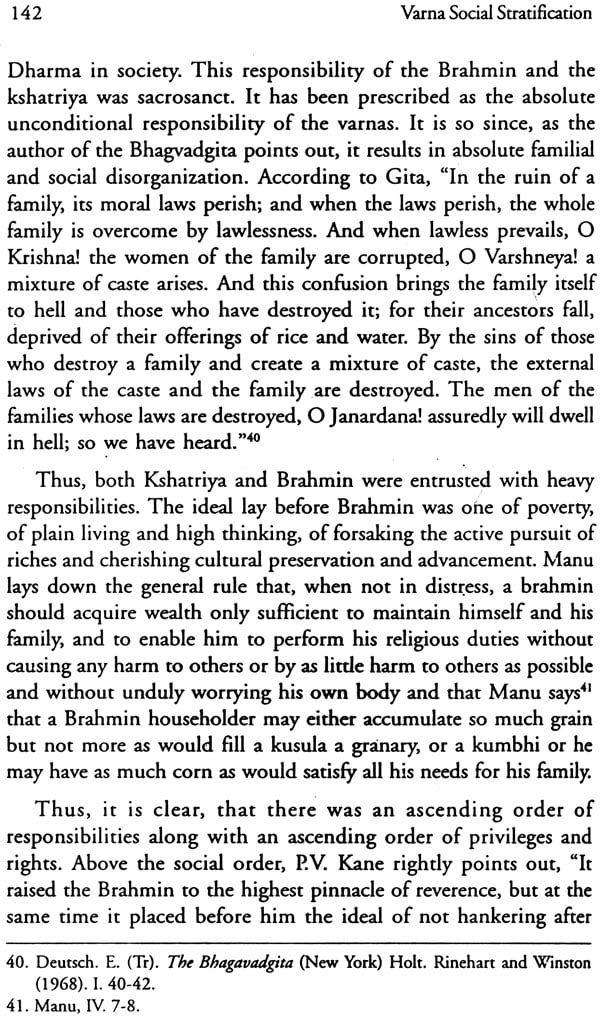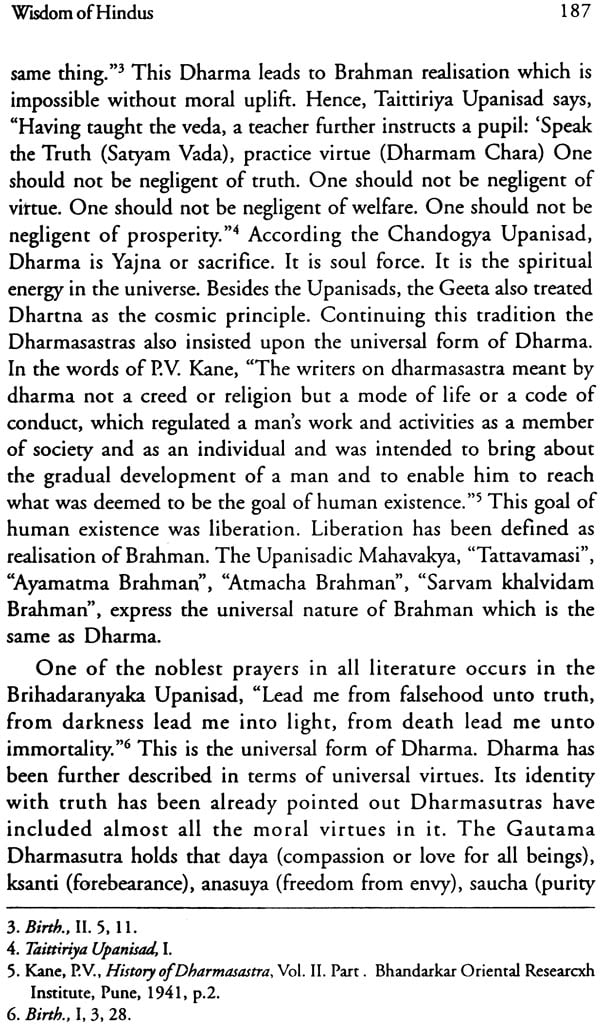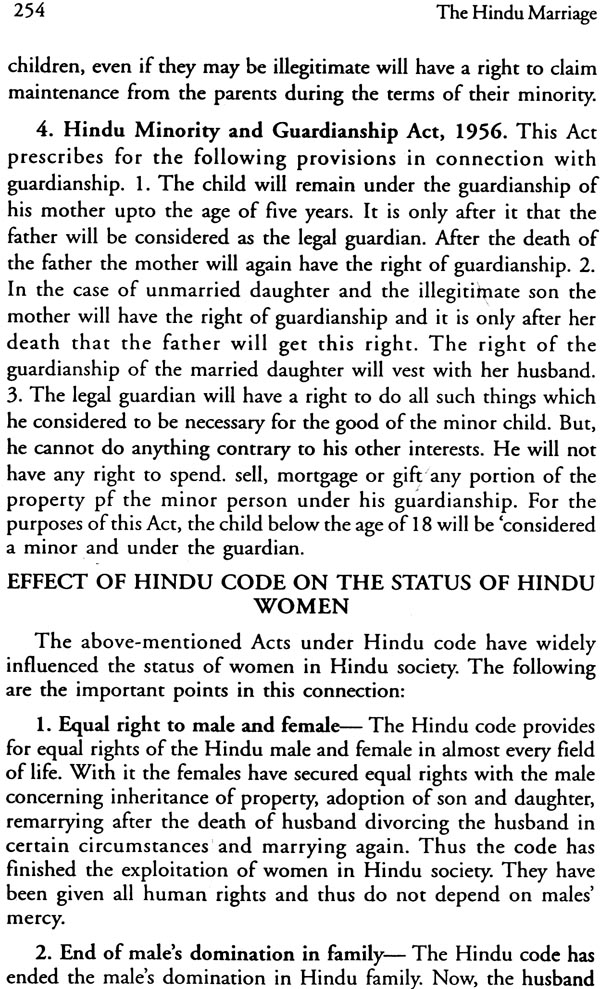
The Philosophy of the Puranas (With Special Reference to the Siva Purana) (An Old and Rare Book)
Book Specification
| Item Code: | NAP924 |
| Author: | Prof. Raghunath Giri |
| Publisher: | Bhartiya Sanskriti Sansthan |
| Language: | English |
| Edition: | 2002 |
| ISBN: | 8187415707 |
| Pages: | 382 |
| Cover: | HARDCOVER |
| Other Details | 8.50 X 5.50 inch |
| Weight | 400 gm |
Book Description
The main philosophical topics, which are discussed here, are the Supreme Reality (Determinate and Indeterminate nature of Siva) Sakti (as Supreme Reality, inseparable Power of Siva Maya-vidya and Avidya and Prakrti), Pafica Brahman with five functions, Tridevas in various phases, Time. (finite and infinite) Linga (as symbol of Siva) soul, theories of Evolution, kinds of Evalution, bondage and Zilusation 'as well as spiritual (Paths Karma-yoga, Bhakti-yoga and Jnana-yoga, with reference to the Puranas ip general and the Siva Puranas in special.
Dr. Raghunath Giri (b. 1931) has obtained his M.A., Ph.D., L.L.B. and Acharya Degrees from Banaras Hindu University. He is the refounder of the Department of Philosophy in H.G. Kashi Vidyapith and is well known as distinguished scholar, thinker, writer and orator in the field of Indian Philosophy. He has participated in various National and International seminar and conferences in India and Abroad and presented his research papers. More than hundred his research papers are published in important English and Hindi Journals. He has been the Chief Editor of Darsanika- Traimasika and editor of several Hindi, English and Sanskrita Journals. His Translation on Bauddha- Tarka-Bhasa of Moks akara Gupta occupies a-very unique position in the studies of Buddhist-Logic in Hindi. More than fifty scholars have completed their research work and obtained Ph.D. Degree in his supervision.
He is one of the selected few prominent scholars of Indian Logic (Navya-Nyaya) in India. He is highly respected by his students who are posted as reader and Professor in the Departments of Philosophy in various Universities.
The Puranas occupy a unique position in the sacred and secular literature of Hindus, being regarded as next in importance only to the Vedas [SEP., p. XLIII].
The Puranas are an invaluable help towards the good life and they are at the same time an epitome of the Indian genius. [C.R. Ramswami Aiyar, SEP.,. p. 206]
The Puranas may be described as the Encyclopedia of Ancient and Medieval Hinduism, Religion, Philosophical, Historical, personal social and Political. [Pargiter ERE X. p. 448].
The present book deals with the Philosophy of the Puranas and establishes a synthetic philosophical view of the Puranas. This synthesis is an interpretation of the Vedas and the Upanisads with the materials of the Agamas and the Tantras and achieved as the result of modific in the basic Philosophical views of the Agamas and the Tantras. In this synthesis the Philosophical categories of the Advaita (Brahmadvaita, Sivadvaita and Saktadvaita) the Vasistadvaita (cit-acit visistadvaita, Siva- Sakti-visistadvaita and Dvaita (Sesvara Sankhya yoga, Pasupatas and Saiva- siddhantas) are harmonized in an integral philosophical view of man, universe and God.
It was a pleasant experience to go through the Preprint copy of The Philosophy of The Puranas' by erstwhile colleague and friend Dr. R.N. Giri. Much have been written on the Puranas and I have seen several theses on Philosophical elements in Puranas. This present one definitely adds to the work of Puranas, but Dr. Giri's work is unique in respect to this. He has not over simplified the Philosophical theory of the Puranas instead he has tried to see the Puranic synthesis rather in the different way in his synthesized work. It is not only a synthesis between knowing and believing being and becoming it is a synthesis worked out in a continuous dialogue with common people. An average listener in India is fully aware to metaphysical aspects of this universe and also has a perception of how man responds to the macro universe around and micro universe within him. Therefore, the present crystalize forms, are a product of continuous interaction of the Puranas.
Dr. Giri has gone into details as to how a new system has come of encrusted systems and their comprehension of the Puranas, he also takes an account of rational purposes of different pathways to God. It was his treatment of Time particularly which is of immense value because studies on these so far have just summary treatment, Dr. Giri instead, has gone into the creative role of Time within course. God is not directly the cause of relation between Prakrti and Purusa. He assumes the form of Time to perform the function of creation, sustenance and dissolution.
The Puranas try to establish that the Time is essential factor of creation and dissolution. The treatment of finite time in different ways in different Puranas is very detailed and succinct in this work.
A Purana is never concerned with the act of creation as an eternal quest. For most of the Puranas creation is a sport of Supreme Power and this sport regenerates itself from time to time so that the balance between man and Universe is maintained.
I was deeply impressed by the observation that TIme is mightiest factor in the world where under the sway of Time Brahma Visnu , Rudra and other Gods all are performing their respective roles that. Though man is equipped with higher intellignece yet he is just like a puppet in the hand of time. Every thing in the universe originates in time, exists in time and is destroyed in time. Hence, time is called creator, protector-and destroyer of every thing and every being in this universe.
Dr. Giri, in his treatment of Atman in different Puraras differentiates, different stand points taken by different Puranas regarding the nature of the soul. He has taken into account more or less known Puranas which have made informations to Atman, but his treatment regarding Atman is more comprehensive and wholesome. The Puranic treatment of the three pathways Jnana, Karama and Bhakti to liberation from death and birth is more or less in consonance with the ways represented in Srimad Bhagvadgita. Yet there are certain observations which make a keen perception of these pathways are found in the Puranas. Dr. Giri has dealt with them systematically and positively.
Needless to say that Dr. Giri's work is a complete in itself and is a positive contribution in the field of Puranic Philosophical studies where Dr. Giri possesses a deep, thorough and clear knowledge and understanding. He can analyse things which are complicated and also identify different kinds of relationship as they are. He made them fit into the system of Philosophical perspective.
However, I can not hold myself from adding a few points which are obliquely dealt with, no doubt but which need some more explanations and clarifications. The Puranas have taken from Srimadbhagvadgita hierarchy of values off our Purusarhas and socio ethical values but the Puranas transcends them and projects the value ofBhakti as the fifth Purusartha. This is not merely a subservience to pod but it is also a compulsion on the part of God to help Man with His grace so that the purpose of life as Universal Creativity is fulfilled.
Thus the treatment of Bhakti is not amoral or moral treatment. It transcends all ethical values and all Purusarthas. It is also propounded by almost all the Puranas that there is no greater virtue than doing good to others and no heinous sin than doing' harm to others. This perception is revealed only through living in all. When one judges his action and ways on the basis of this principle he feels that he is completely with the relationship to the persons where he is making adjustment.
The Puranas have tried to solve Problems of inequality and various kinds of biases by visualizing the divine Potentiality in every being. It shows that it is not a radical treatment of inequality, Yet it is true that they are completely satisfied with the solutions which they offer.
On the social problem of the Indian People in the Medieval era, it has provided a new horizon of transcendence of hierarchy. This aspect has to be highlighted when one evaluates the contents of the Pruanas.
To conclude, I may say that this is just by way of appreciation of the work done by Dr. Giri. I just tried to add the supplement for his well written script. I take this opportunity to congratulate him and wish him well. I have greater expectation for him as a great scholar and as an eminent thought processor in the present world of a whirlpool of ideas.
The Puranic literature is the store-house of Indian traditional knowledge, culture, philosophy and religion. The Puranas are the encyclopaedia of ancient and medieval Hinduism and so continuous efforts have been made to study them and yet there is much to be explored. No apology, therefore, is needed for undertaking the present study. In fact the undertaking is so difficult that the author is not sure whether he has succeeded in doing justice to it. However he has made an humble effort if only to initiate further research.
As is well known the Puranas, donot consist of mere mythology; they deal with numerous philosophical problems like the nature of the supreme Reality, conception of one or the other God, description of the process of creation etc., nature of the self, bondage and liberation, the law of karma and many other problems. But they differ so widely in their treatment of these problems that a systematic study of the philosophy of the Puranas is not possible in a single volume. The various Puranas are not systematic treatises of philosophy and their approach to philosophical problems is neither analytical nor critical; their philosophic contents are too diverse to admit of easy synthesis and evaluation. The present work is a revised form of the Doctoral thesis entitled "The Philosophy of the Puranas, with special reference to the Siva Purana'', prepared under the supervision of professor T.R.V.Murti and submitted in Banaras Hindu University in the year 1967. Though an attempt is made to present the philosophical outlook of the Puranas yet the auther has confined his study specially to the Philosophic contents of the Siva Purana which seems to be an attempt to interpret the Upanisadic philosophy in the terms of Agamas and Tantras. The Siva Purana derives its philosophic materials from different sources, which are so diverse in their nature, that it is very difficult to find out the central thought under lying the apparent differences. There are a number of schools of Saivism mentioned and referred to in the Puranas, but no where is to be found a clear and systematic philosophical exposition of all these schools.
This study emphasises the view that the Siva Purana represents one systematic and consistent philosophical thought which may be termed the philosophical integration of the Siva Purana. There are different ideas in different Samhitas, but the differences are synthesised and comprehended under a central philosophical theme (which is repeatedly emphasized) in the Siva Purana. As examples of synthesis, may be cited the identification of Brahman, Sakti and Kala with Siva, the identification of Siva with Brahma, Visnu and Rudra.The identification of Sakti, Maya and Prakrti. The identification of soul, Siva, pasu and purusa etc. To establish the hypothesis of integration and synthesis on a firm footing it would not be out of the place to refer to the internal evidences such as the story of the meeting of satkaliyas or the six schcols and the respectful attitude of the Purana towards other schools of thought: The present work conists of eleven chapters along with introduction and conclusion. The introduction gives a brief information about the antiquity, importances, characteristics, names and numbers of the Puranas. An attempt is made there to establish the Siva Purana as Mahapurana and the philosophy of the Siva Purana as a synthetic philosophy.
Metaphysics and pathways to liberation, these two main issues of the Puranic philosophy have been taken for consideration in this work. Hence the various aspects of Metaphysical problems have been taken for consideration in the first eight chapters. The First Chapters deals with the nature of supreme reality, Siva and his determinate and indeterminate natures are discussed following the Upanisadic line to interpret their relation .. The second chapter discusses Sakti in four phases as supreme reality, inseparaba1e and eternal power of Siva, Maya as the cause of bondage and liberation in the form of Avidya and vidya and prakrti as the source of material evolution. In chapter third the nature of Five Brahman who are the super form of Siva and presiding deities of creation, sustenance, dis- solution, abscuration and grace are discussed. In chapter fourth Trideva Brahma, Visnu and Radra in their three phases have been taken for consideration As time plays a important role in the Puranic philosophy, and is also an assumed form of Siva. is discussed in chapters five. Chapter Six deals with Sthula Riupa (gross form) of Siva, in four phases Virat, Asta murti, Linga and Om.
Chapter Seven takes the world for consideration and discusses various theories of causation, different views about material cause, kinds of evolution and creation and efficient cause of the world.
In chapter Eight the nature of self and various views regarding the nature of self are explained with the concept of bondage and liberation.
The last three chapters deal with the Spiritual paths of liberation. In chapter Nine the path of karma, in chapter ten path of devotion and in chapter eleven path of knowledge are discussed and explained.
The sacred and secular literature of the Hiduds, is roughly divided into fourteen or eithteen classes and each of them is called a Vida (a branch of learning, a science), "The Puranas occupy a unique position" in them being regarded as next in importance only to the Vedas. III Traditionally it is held that the study of the Puranas is essential and necessary for correct understanding-and right interpretation of the Vedas." Owing to this the Puranas have obtained art equal status with the Vedas and are called the fifth Vedas.
Different ancient Hindu Scriptures e.g. the Atharva Samhita, the Brahmanas, the Upanisads etc." refer to the name of the Purana with other sacred books. It indicates the antiquity and sanctity of the Purana. But the veterans of the Puranas claimed their antiquity and importance to such an extent that-they are regarded more ancient than the Vedas,' and a Brahmana who knew all the Vedas and the Vedangas, but did not know the Puranas, was not regarded as a wise man in the real sense.' On this issue Pargiter.' states that "there was a clear rivalry between the Puranas, and the Vedas, and in asserting the superiority of the Puranas, or the ancient tradition over the Vedas, the Puranas were right to this extent that the ancient tradition unquestionably existed before the Vedas, for the vedic hymns allude to by-gone persons and events'" (mentioned in the Puranas). But it cannot be said that the Puranas in their present form were present at the time of the Vedas. At most it may be said that there were certain tradition at the time of the Vedas which were followed in the Vedas and elaborately described, later on, in the Puranas. The superiority of the Puranas over the Vedas may be admitted in the sense that the study of the Puranas was not restricted but recommended for all the people without any discrimination of caste, creed, sex etc. while the Vedas were meant only for the people of higher classes." Undoubtedly their importance lies in their liberality of attitude, simplicity of language and expression, and comprehensiveness in the subject matter. But notwithstanding all this the Puranas are not studied so devotedly as the other branches of Sanskrta literature. In the words of Sri Narsimha Swami, we may say that, "the Vedic literature has its own students who devoted their lives to its study. Similarly the Vyakarana, the Nyaya the Vedanta; all have their own devoted students. But some branches of Sanskrta literature, however, were not so fortunate as to have their special followers. The Puranic 'and Ayurvedic literature are two of such illfated ones".' Pargiter also feels the' same when he says "until the Puranas have been studied more carefully, than they hither-to have been (and they deserve such study) it is impossible to affirm any thing positive about their ages.'?

